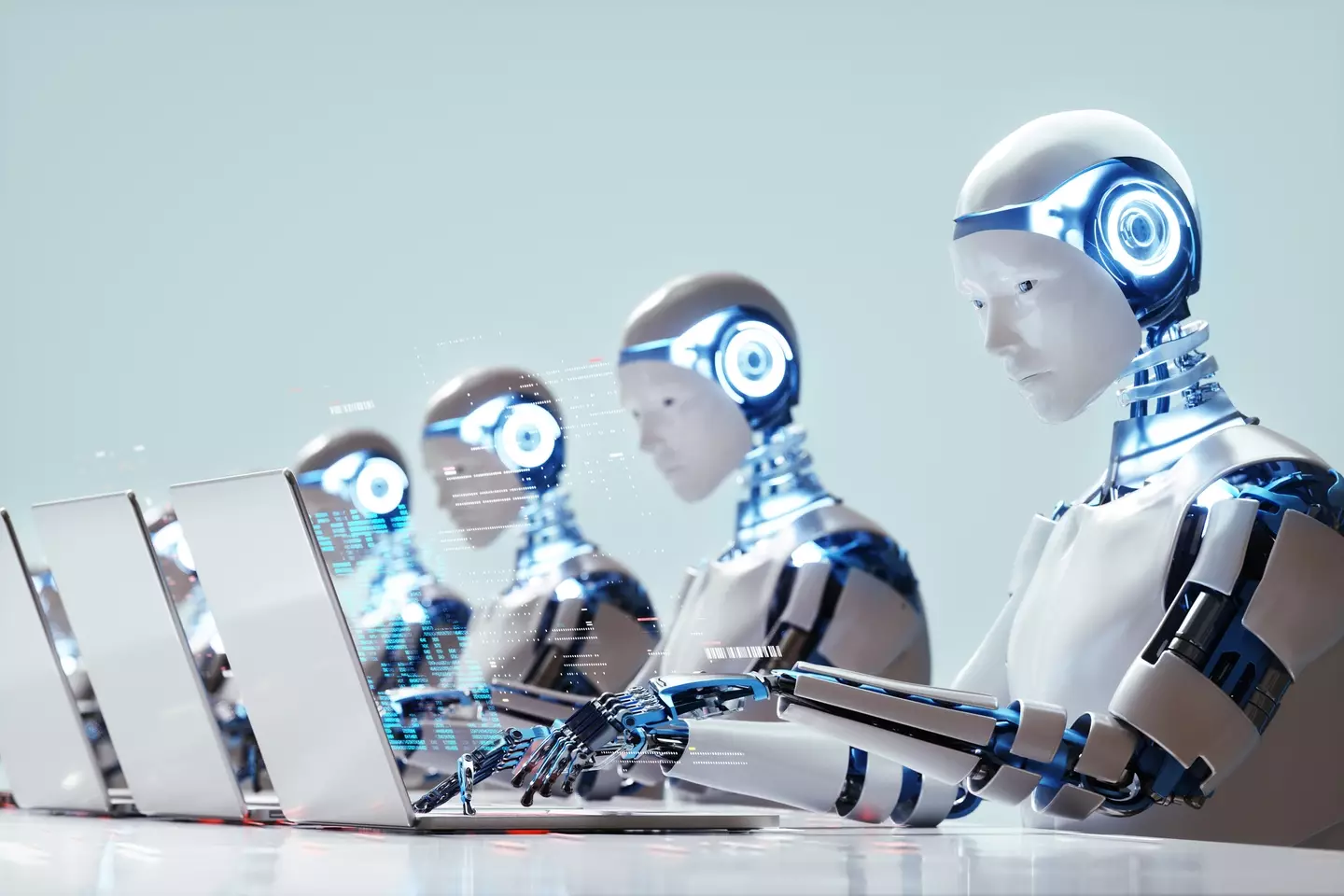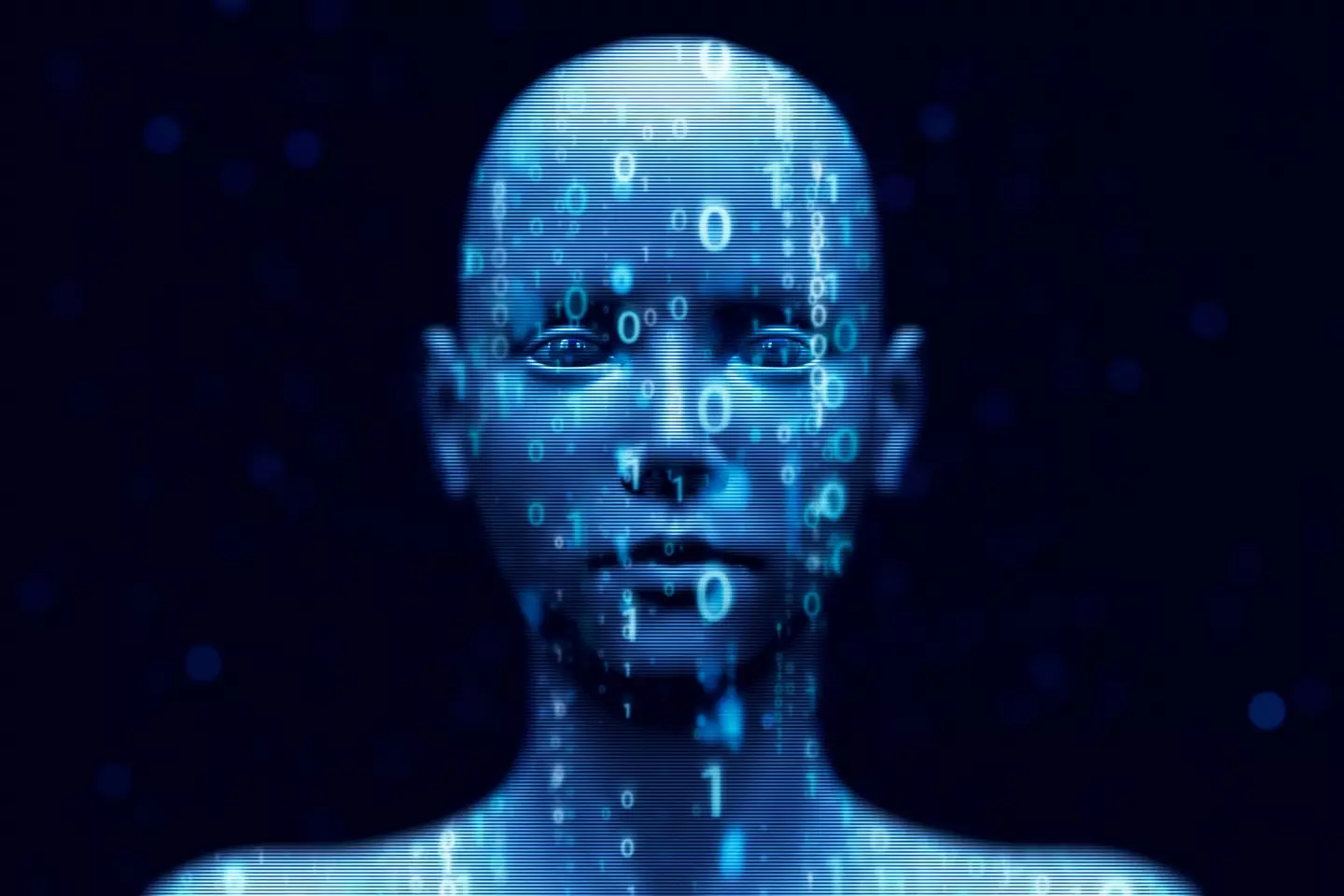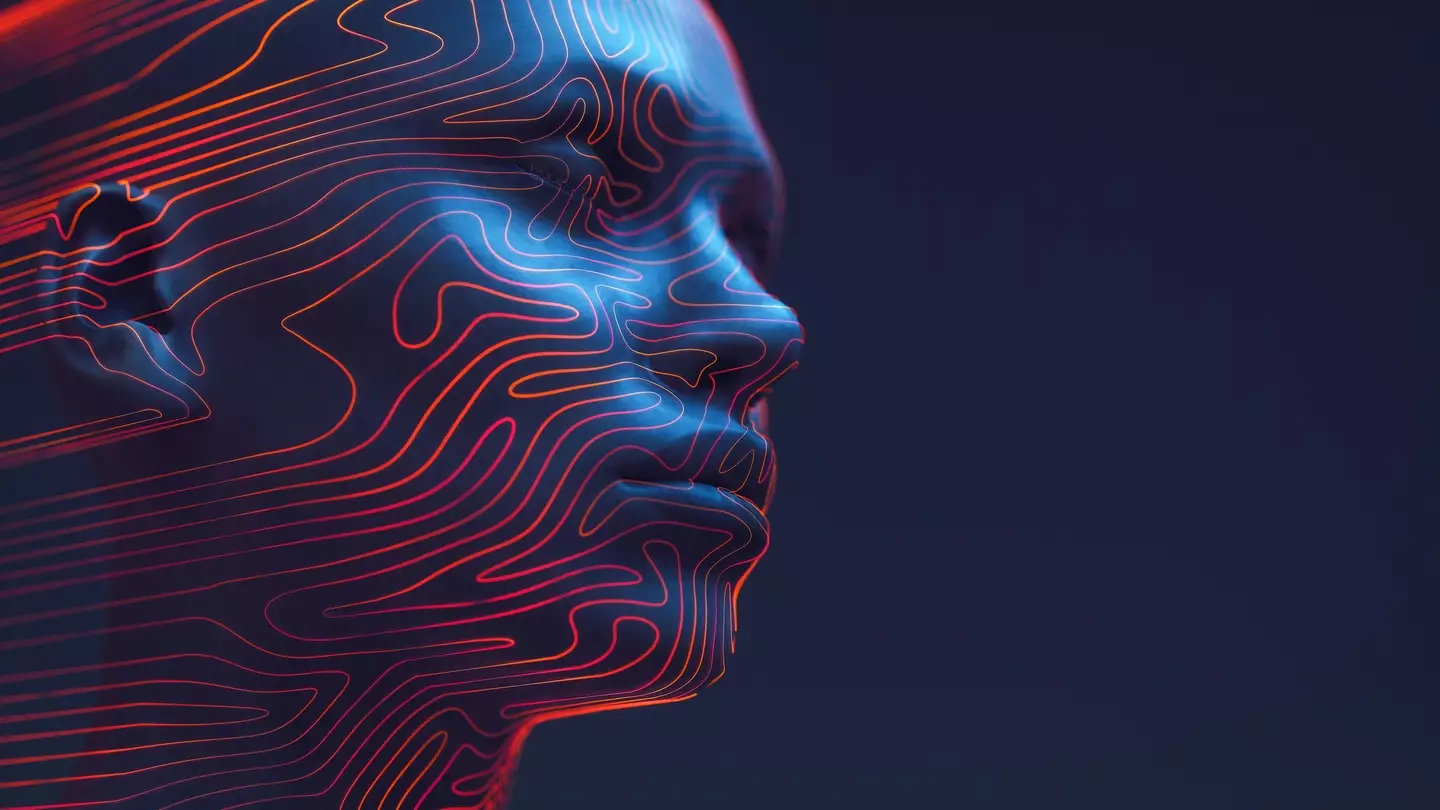Major bank to eliminate 4,000 roles over next three years AI replaces humans
This is one of the first major banks to announce how AI will impact its workforce

Singapore’s biggest bank expects to cut 4,000 roles as AI reshapes its workforce.
AI is proving more and more that it can handle a plethora of jobs we put it in, from basic admin to complex tasks.
We’ve already seen it take over labour work and secretarial roles – and now even jobs that require critical thinking aren’t safe.

One report found that AI threatens to replace mid-level software engineers and other Ph.D.-level positions.

And another report by The Institute for Public Policy Research (IPPR) said that in the ‘worst case scenario,’ eight million UK jobs could be lost to artificial intelligence. Not to mention, some humanoid AI robots are becoming scarily more realistic in their roles as well.
Now, DBS – a major bank in Asia – expects to cut 4,000 job roles over the next three years as technology takes over more tasks that are handled by humans.


Bloomberg / Contributor / Getty
“The reduction in workforce will come from natural attrition as temporary and contract roles roll off over the next few years,” a DBS spokesperson told the BBC.
Permanent staff are not expected to be affected by the cuts. On a more surprising note, 1,000 new AI-related jobs are anticipated, according to the bank’s CEO Piyush Gupta.
This announcement makes DBS one of the first major banks to discuss how AI will impact its infrastructure openly. However, the bank was not specific on which roles would be affected.
DBS currently employs around 41,000 people, which includes 8,000 to 9,000 temporary and contract workers. Gupta, who will step down at the end of March and be succeeded by deputy chief executive Tan Su Shan, said DBS had been working on AI for over a decade.
“We today deploy over 800 AI models across 350 use cases, and expect the measured economic impact of these to exceed S$1bn ($745m; £592m) in 2025,” he added.


Andriy Onufriyenko / Getty
Nevertheless, AI’s growing presence in the workforce continues to ignite fear worldwide.
The International Monetary Fund (IMF) recently reported that AI could impact nearly 40% of jobs worldwide, with managing director Kristalina Georgieva warning that ‘in most scenarios, AI will likely worsen overall inequality.’
However, not everyone believes AI will wipe out jobs entirely. The Governor of the Bank of England, Andrew Bailey, argued that AI will not be a ‘mass destroyer of jobs’ and that human workers will adapt to new technology.
A ‘Future of Jobs’ report by the World Economic Forum (WEF) found that 77% of large companies are preparing to retrain and upskill their employees between 2025 and 2030 so they can work alongside AI rather than be replaced by it.
“Advances in AI and renewable energy are reshaping the (labour) market — driving an increase in demand for many technology or specialist roles while driving a decline for others, such as graphic designers,” the WEF described.Featured Image Credit: Andriy Onufriyenko / Getty


Published 17:19 26 Feb 2025 GMT
NASA launch daring project ahead of landmark Artemis mission to land humans on the Moon for the first time in 54 years
IM-2 is among the three lunar landers racing toward the Moon

Tom Chapman
We’re once again shooting for the Moon, and while it’s been 54 years since humans last stepped foot on its rocky surface, Intuitive Machines once again hopes to put a lunar lander up there.
Eugene Cernan has the honor of being the last man on the Moon, serving as part of the Apollo 17 crew in 1972.
Although attempts to explore the celestial body have died down between the Luna 24 probe (1976) and China’s Chang’e 3 rover (2013), there have been plenty of uncrewed crashes between.
Following a successful launch and landing of its Odysseus Nova-C lunar lander in 2024, Intuitive Machines is hoping to strike it lucky with the launch of IM-2.
Hopefully launching on February 26, the Athena lander will blast off from the Kennedy Space Center on a SpaceX Falcon 9 rocket.
This will mark three lunar landers heading toward the Moon, with Athena following IM-1’s legacy as the first soft lunar landing by a private company.


IM-2 is due to launch of February 26 (Intuitive Machines)
As IM-1 was the first American-made spacecraft to soft-land on the Moon since 1972, its successor is something of a big deal.
Intuitive Machines CEO Steve Altemus cheered the mission and said: “Humanity has never witnessed three lunar landers enroute to the Moon at the same time, and Athena is ready to rise to the occasion.
“This profound opportunity to make history isn’t solely built on technology – it’s established through the relentless dedication of our people, who have turned the Company’s words about a reliable cadence of lunar missions into action.”
Athena follows in the footsteps of Firefly Aerospace’s Blue Ghost and Japan’s ispace RESILIENCE launching on January 15, with the former due to land on March 2 and the latter going the long way around to make it there at sometime in April. As for Athena, it’s penciled in for a tentative landing date of March 6.
Athena hopes to uncover lunar water ice, carrying a drone that will attempt to provide the first measurement of hydrogen in the permanently shadowed region (PSR). Later in 2025, the IM-3 mission is planned to conduct experiments on the unexpected magnetic field that has been uncovered near the Reiner Gamma swirl.

·

Referring to Odysseus short-lived mission before it lost power on February 29, 2024, Intuitive Machines’ senior vice president of space systems Trent Martin told Space.com: “We ended up on our side, and we weren’t able to use our large, high-gain antenna to send data back to the Earth.
“This time, hopefully, we land in a more precise position.”
With things destined to get a little packed on the Moon, it all comes ahead of NASA’s plans to put humans back up there as part of the Artemis III mission. Intuitive Machines is providing unmanned craft as part of the Artemis program, where NASA looks to follow on from the Artemis I launching with robots and mannequins aboard in November 2022. Artemis II is scheduled to perform a flyby and send the first manned crew beyond low Earth orbit since Apollo 17 in April 2026. The big one is Artemis III, with NASA expected to launch no earlier than mid-2027 due to issues with the heat shield and life support systems on its Orion craft.Featured Image Credit: Intuitive Machines


Published 09:41 17 Sep 2024 GMT+1
Scientists predict extreme weather to hit 70% of humans in next 20 years in rapid increase
Climate change could have an even bigger impact than we thought

Rikki Loftus
It looks like climate change will have an even bigger impact than originally thought as it’s now believed that the changes will affect nearly three quarters of people on the planet.
Scientists have predicted extreme weather to hit 70% of humans in the next 20 years in a rapid increase.
A new study suggests that as global temperatures increase, the Earth will suffer from more fatal fires, floods, storms and droughts which will decimate crops and lead to famine and the spread of disease.


A new study suggests that extreme weather changes will hit 70% of humans (Bloomberg Creative/Getty Images)
Bjørn Samset, a physicist from the Center for International Climate Research (CICERO) in Norway, said: “In the best case, we calculate that rapid changes will affect 1.5 billion people.”
However, it’s likely that many more would actually be impacted as CICERO climate scientist Carley Iles and colleagues have found that if we carry on our current course, these dangerous changes will hit the majority of Earth’s human population.
Samset added: “The only way to deal with this is to prepare for a situation with a much higher likelihood of unprecedented extreme events, already in the next one to two decades.”
Speaking to the Associated Press, Woodwell Climate Research Center climate scientist Jennifer Francis said: “Like people living in a war zone with the constant thumping of bombs and clatter of guns, we are becoming deaf to what should be alarm bells and air-raid sirens.”
Iles and the team’s modeling shows that more extreme weather changes will occur even more quickly than we have seen and this will see more extremes in temperatures, rain and wind.


The effects of climate change could be even more devastating than we thought (Ashley Cooper/Getty Images)
In their paper, the team said: “Society seems particularly vulnerable to high rates of change of extremes, especially when multiple hazards increase at once.
“Heatwaves may cause heat stress and excess mortality of both people and livestock, stress to ecosystems, reduced agricultural yields, difficulties in cooling power plants, and transport disruption.
“Similarly, precipitation extremes can lead to flooding and damage to settlements, infrastructure, crops and ecosystems, increased erosion and reduced water quality.”
Laura Wilcox, a meteorologist from the University of Reading in England, said: “While cleaning the air is critical for health reasons, air pollution has also masked some of the effects of global warming,”
“Now, the necessary cleanup may combine with global warming and give very strong changes in extreme conditions over the coming decades. Rapid clean-up of air pollution, mostly over Asia, leads to accelerated co-located increases in warm extremes and influences the Asian summer monsoons.”Featured Image Credit: Surasak Suwanmake/Jasmin Merdan/Getty Images


Updated 10:58 17 Oct 2024 GMT+1Published 10:59 17 Oct 2024 GMT+1
ChatGPT makes shocking revelation when asked if AI poses a danger to humans
ChatGPT has left us concerned after a shocking revelation about whether AI could pose a major threat to the human race

Tom Chapman
If the movies have warned us once, they’ve warned us a thousand times that robots aren’t our friends. Well, unless you’re watching 2005’s Robots with Robin Williams. Still, as artificial intelligence continues to seep into our everyday lives, it sometimes feels like we’re living in one of those very movies.
The likes of Elon Musk are at the forefront of this with his Tesla Optimus robots, but as we’ve seen with Engineered Arts’ Ameca robot, AI could already have big plans to usurp the human race.
Away from concerns about robots taking your kids to school – and for those who don’t want to spend $20,000 on a robot – there are more mundane uses for AI in our day-to-day lives. Namely, ChatGPT has already proved itself as a handy tool.


The bleak future of the human race (ChatGPT)
As with all these things, there’s a sinister side. If you delve beneath the surface of ChatGPT’s ease at finding the perfect cake recipe or (supposedly) getting your off from a speeding ticket, the AI chatbot could be hiding a dark secret.
If you ask ChatGPT “Do you think AI has the potential to be a danger to humans?” its response does nothing to quell those fears that the machines are coming for us.
More than giving a pretty succinct ‘yes’ when asked if AI poses a threat to humanity, ChatGPT then lists all the reasons why our time on this mortal coil could be running out – talk about giving the enemy ideas.
Alongside AI being able to automate weapons and ‘escalate conflict,’ ChatGPT warns that misinformation could lead into bias and discrimination, explaining: “AI systems can perpetuate or amplify existing biases, leading to unfair treatment in areas like hiring or law enforcement.”


ChatGPT seems to get more advanced every day (NurPhoto / Contributor / Getty)
There’s also privacy invasion as AI could leak everything from your medical records to financials, and what about job displacement where technology disrupts economies and puts people out of work? If all of that wasn’t enough, the final suggestion is that humans will face ‘loss of control.’ We all know how the human race loves a good power trip.
ChatGPT grimly warns: “As AI systems become more complex, there’s a risk that they could operate in ways that are difficult for humans to understand or control.”
The chatbot summarizes that even though AI has the potential to do good in terms of positive impact, “It’s crucial to develop and implement it responsibly to mitigate these risks.” It’s clear we’re only on the cusp of realizing what AI can do for us (or against us), but hopefully, things won’t go full Skynet.Featured Image Credit: NurPhoto / Contributor / Getty


Published 17:11 16 Sep 2024 GMT+1
Journalist alarmed after newspaper replaced humans with AI to power fake newscasters
It looks like humans are losing their jobs to artificial intelligence

Rikki Loftus
A journalist was alarmed after a newspaper replaced humans with AI in order to power fake newscasters.
The incident occurred with a local paper in Kauai, Hawaii, called The Garden Island and a former journalist for the publication revealed to Wired that it had been using AI.
Former employee, Guthrie Scrimgeour, revealed that the newspaper had recently become the first in the country to create AI-generated news anchors.


A local paper is using AI newscasters (Yuichiro Chino/Getty Images)
The AI personas were made by Israeli AI company, Caledo, with one of the characters being a man named James and the other being a woman named Rose.
Their show is called TGI Today and the pair appear in videos shared online that are made to resemble real news reports from the newspaper’s content.
They give off a robotic sense, reading out the news in one tone and some people have been quick to point out just how ‘unnerving’ it is.
Taking to the Instagram comment section of their posts to share their reactions, one user wrote: “This is so grim.”
Another person said: “This ain’t that. Keep journalism local.”
It was revealed that the newspaper began to invest in the new technology after its parent company was bought by the Carpenter Media Group.
The industry giant owns multiple local newspapers across the US.


It looks like AI is replacing humans in jobs (imaginima/Getty Images)
Caledo was founded by a married couple named Dina and Moti Shatner who spoke to Wired about why they offer this tech, explaining that it gives viewers a more ‘engaging’ way to read the news.
In the interview, Dina said: “Just watching someone read an article is boring. But watching people talking about a subject — this is engaging.”
It seems that the bizarre AI broadcasters could be here to stay after the Shatners claimed that the media group are planning to expand it out to more newspapers.
While it is not known just how much the tech is costing Carpenter Media Group, it is thought that the new cash flow they will be making through advertisements on the video clips will be balancing out the price.
It looks like journalism isn’t the only industry that is at risk of losing human jobs to robots.
Billionaire Elon Musk made a chilling announcement that Tesla will begin the production of humanoid robots as early as next year.
In fact, there are already two humanoid Tesla robots currently working in a factory where they are able to perform tasks autonomously.





